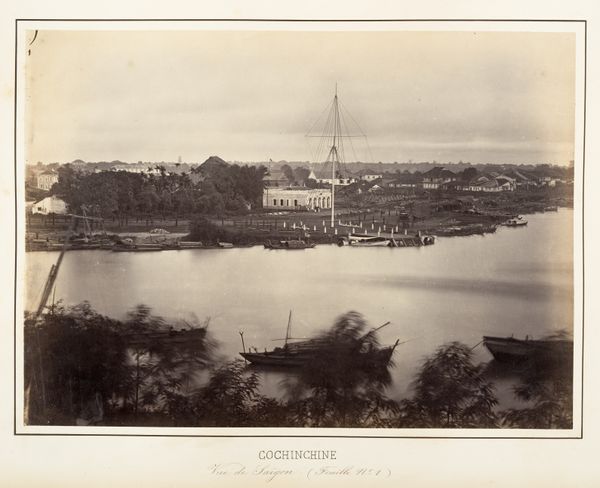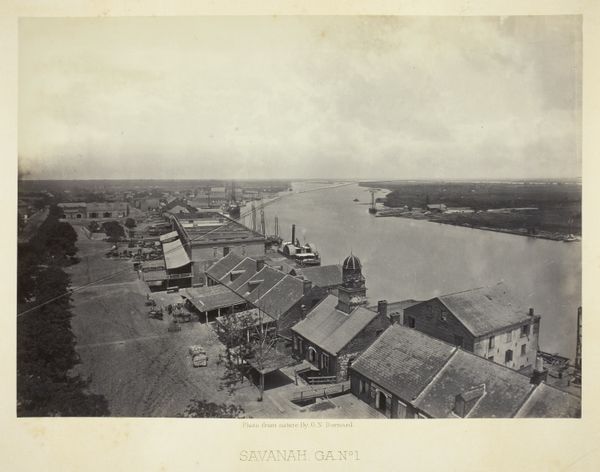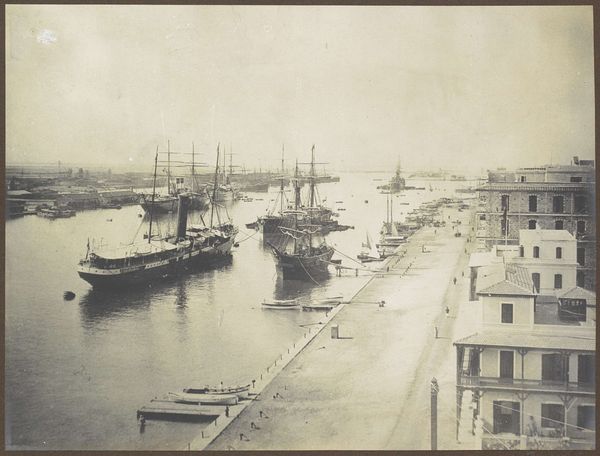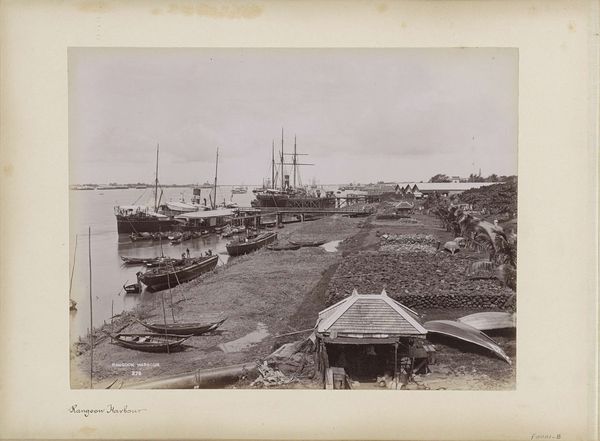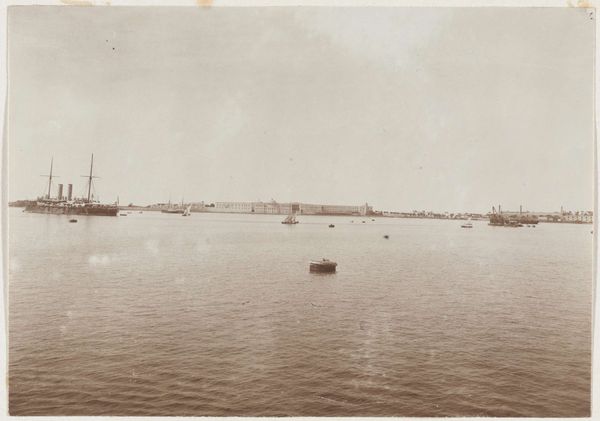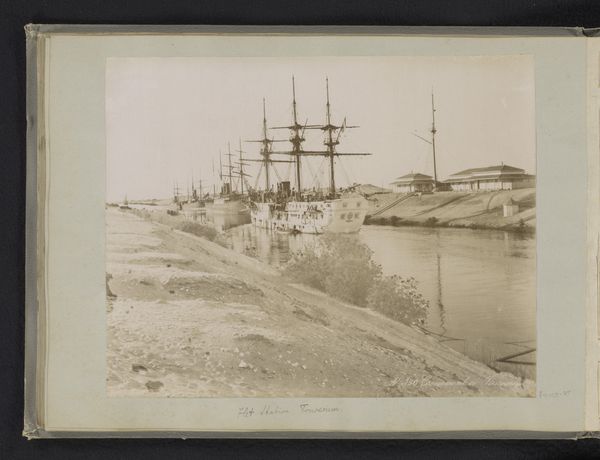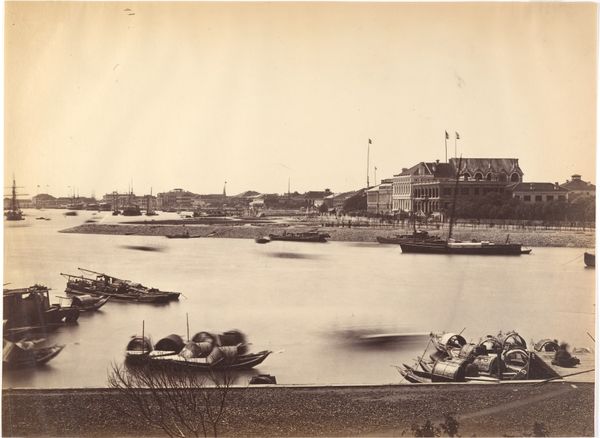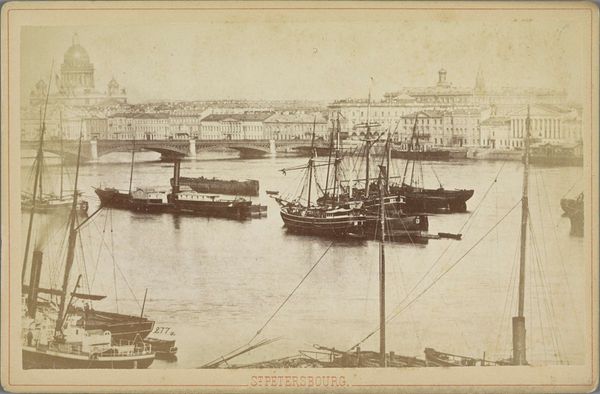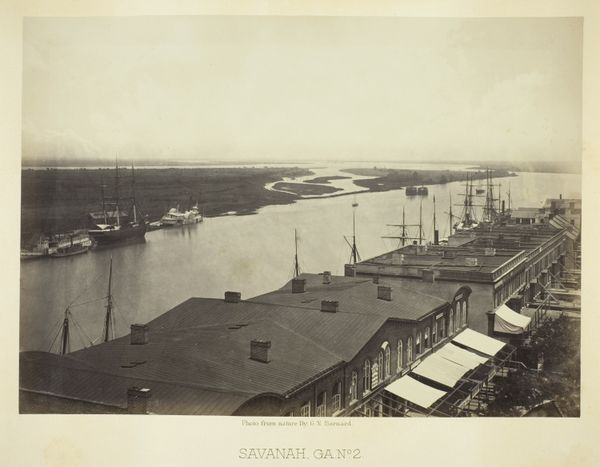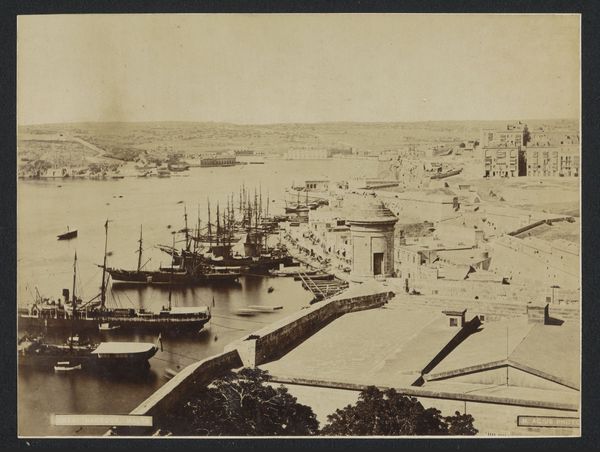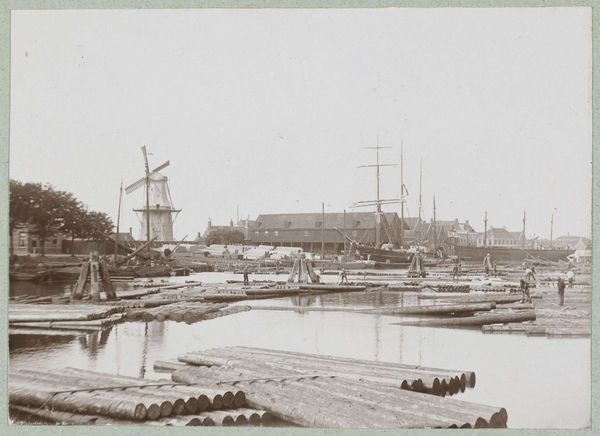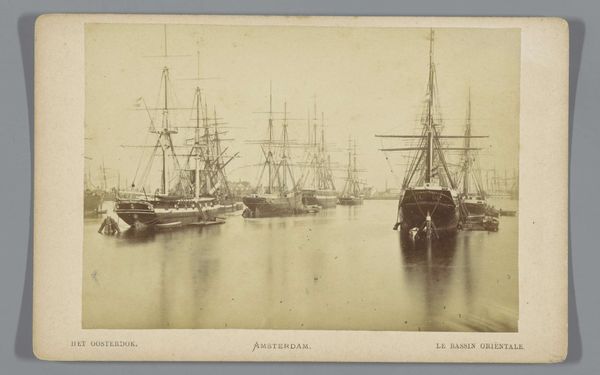
print, photography, albumen-print
#
ship
# print
#
asian-art
#
landscape
#
river
#
photography
#
historical photography
#
orientalism
#
history-painting
#
albumen-print
Dimensions: 24.7 x 33.7 cm (9 3/4 x 13 1/4 in.)
Copyright: Public Domain
Editor: We're looking at Emile Gsell's "Vue de Saïgon (Feuille No. 3)," an albumen print from 1866. It depicts a river scene filled with ships. I'm struck by the contrast between the detail in the ships and the somewhat blurry foreground foliage. What do you see in this photograph? Curator: The albumen print, a process yielding rich tonal range, presents a scene structured around receding planes. Note how Gsell employs the river as a compositional device, leading the eye from the dark foreground up to the distant buildings. Consider the textural contrast—the sharpness of the ships against the softer foliage, rendered so by the focusing limitations of the lens technology available then. Editor: So, the varying sharpness isn't necessarily a flaw but more a characteristic of the medium? Is there significance to how sharply the ships in particular were captured? Curator: Precisely. The depth of field is intentionally shallow. Given photography's unique ability to faithfully capture forms, the careful recording of each ship’s rigging is critical. Observe the repetition of vertical masts echoed by the foreground trees, creating a formal cadence throughout the image. This interplay establishes a complex network within the picture plane itself. What could that tell us about Gsell's artistic concerns? Editor: That the structure and arrangement of the composition are perhaps just as, or even more, important than the historical documentation? Curator: Indeed. Though the photograph offers documentary value, Gsell transcends mere record-keeping. He orchestrates visual elements –light, shadow, texture and depth of field– to create a deliberate composition that engages our perception and intellect. Editor: This reframing really highlights how intentioned choices in composition shape our viewing experience and add a whole other layer to understanding this work. Curator: Exactly, viewing it as a confluence of form and structure reshapes our entire comprehension.
Comments
No comments
Be the first to comment and join the conversation on the ultimate creative platform.
